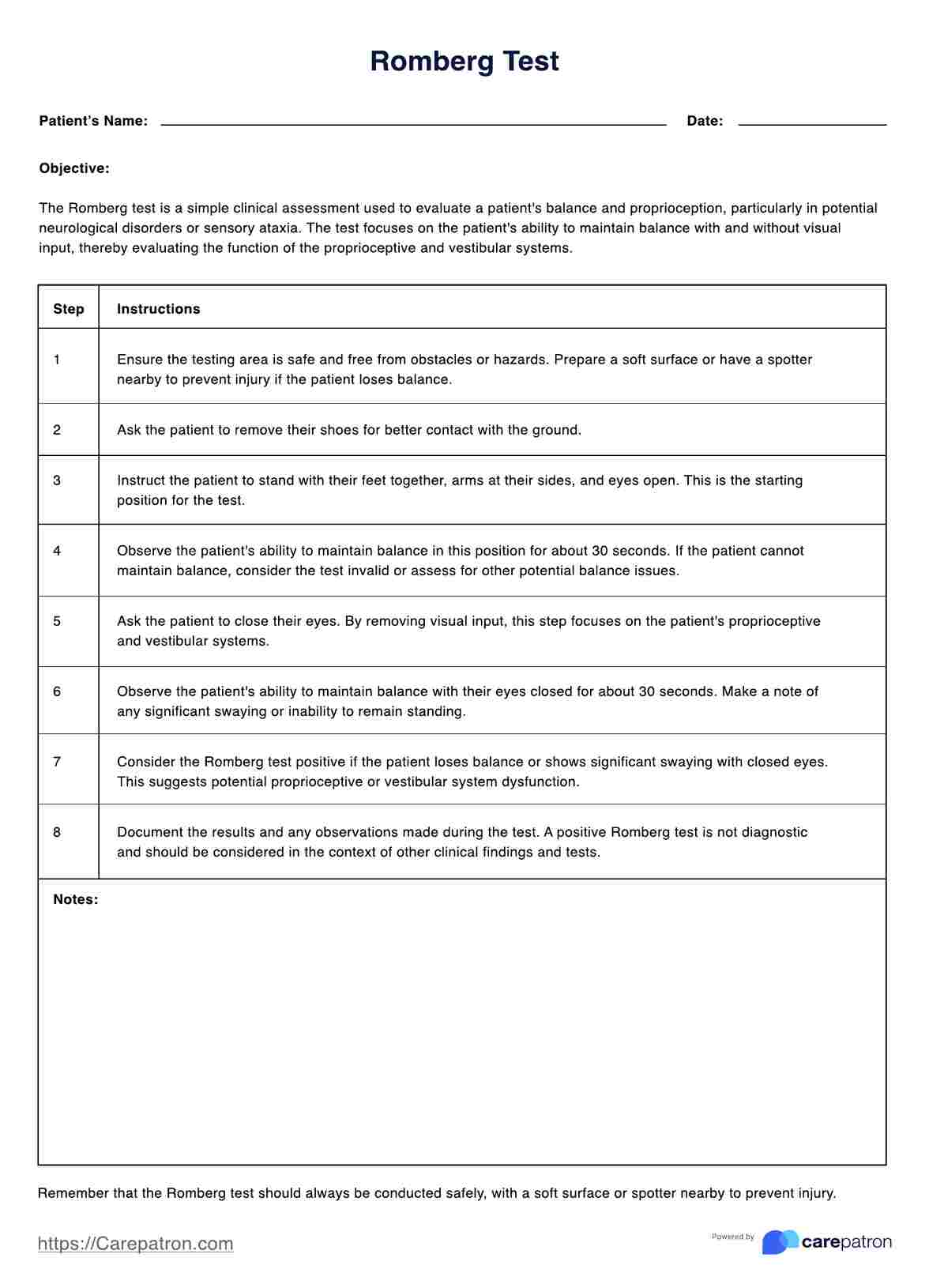The Romberg Test is scored as positive or negative based on the patient's ability to maintain balance with closed eyes. A positive Romberg Test indicates potential proprioceptive or vestibular dysfunction, while a negative test suggests normal balance and proprioception.

Romberg Test
Learn about the Romberg Test, a clinical assessment of balance and proprioception, and download our free PDF template to help streamline the testing process.
Romberg Test Template
Commonly asked questions
The Romberg Test is a simple, non-invasive clinical assessment that can help identify potential balance disorders or sensory ataxia in patients. The test is easy to administer and can provide valuable insights into a patient's proprioceptive and vestibular function.
The Romberg Test evaluates patients' balance and proprioception by testing their ability to maintain balance with and without visual input. The test can help identify potential issues related to balance and coordination, including peripheral neuropathy, multiple sclerosis, vitamin B12 deficiency, and certain vestibular disorders.
EHR and practice management software
Get started for free
*No credit card required
Free
$0/usd
Unlimited clients
Telehealth
1GB of storage
Client portal text
Automated billing and online payments











